“Knowledge is the Best Medicine: Learn How to Prevent FLUTD in Your Feline Friend!”
Introduction
Understanding Feline Lower Urinary Tract Disease (FLUTD) is essential for cat owners. FLUTD is a common and potentially serious condition that can cause pain and discomfort for cats. It is important to be aware of the signs and symptoms of FLUTD, as well as how to prevent it. This article will provide an overview of FLUTD, its causes, symptoms, and prevention methods. By understanding FLUTD, cat owners can help ensure their cats stay healthy and happy.
What is Feline Lower Urinary Tract Disease (FLUTD) and What Are the Symptoms?
Feline Lower Urinary Tract Disease (FLUTD) is a common condition in cats that affects the bladder and urethra. It is characterized by inflammation of the bladder and urethra, and can be caused by a variety of factors, including bacterial infection, bladder stones, and stress.
The most common symptoms of FLUTD include frequent urination, straining to urinate, blood in the urine, and urinating outside of the litter box. Other signs may include excessive licking of the genital area, loss of appetite, and vomiting. If left untreated, FLUTD can lead to serious complications, such as bladder rupture and kidney failure.
Treatment for FLUTD depends on the underlying cause. In some cases, antibiotics may be prescribed to treat a bacterial infection. In other cases, dietary changes may be recommended to reduce the risk of bladder stones. Stress management techniques may also be recommended to reduce the risk of recurrence.
It is important to seek veterinary care if your cat is exhibiting any of the symptoms of FLUTD. Early diagnosis and treatment can help to reduce the risk of serious complications.
How to Diagnose and Treat FLUTD in Cats
Feline lower urinary tract disease (FLUTD) is a common condition in cats that can cause a variety of symptoms, including difficulty urinating, frequent urination, and blood in the urine. If left untreated, FLUTD can lead to serious complications, such as bladder stones or a urinary tract infection. It is important to diagnose and treat FLUTD in cats as soon as possible.
Diagnosis
The first step in diagnosing FLUTD is to take your cat to the veterinarian for a physical examination. During the exam, the vet will check your cat’s abdomen for any signs of pain or tenderness. The vet may also take a urine sample to check for signs of infection or crystals. In some cases, the vet may also recommend additional tests, such as an ultrasound or X-ray, to get a better look at the bladder and urinary tract.
Treatment
Once the diagnosis is confirmed, the vet will recommend a treatment plan. Depending on the cause of the FLUTD, the treatment may include antibiotics, dietary changes, or medications to reduce inflammation. In some cases, surgery may be necessary to remove bladder stones or other obstructions.
It is important to follow the vet’s instructions and monitor your cat’s progress. If the symptoms do not improve or worsen, contact your vet immediately.
Prevention
The best way to prevent FLUTD is to keep your cat’s environment clean and stress-free. Make sure your cat has access to plenty of fresh water and a balanced diet. Regular exercise and playtime can also help reduce stress. Additionally, it is important to keep your cat’s litter box clean and free of debris.
FLUTD can be a serious condition, but with prompt diagnosis and treatment, most cats can make a full recovery. By following the vet’s instructions and taking steps to prevent FLUTD, you can help keep your cat healthy and happy.
The Role of Diet in Preventing FLUTD in Cats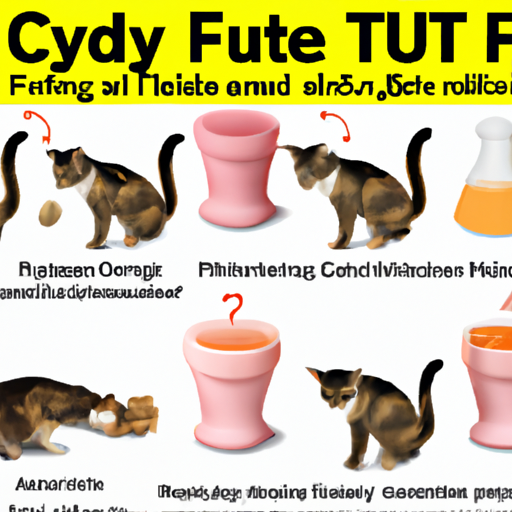
Feline lower urinary tract disease (FLUTD) is a common and potentially serious condition in cats. It is important for cat owners to understand the role of diet in preventing this condition.
The primary cause of FLUTD is not known, but there are several factors that may contribute to its development. These include obesity, stress, and diet. Diet is an important factor in the prevention of FLUTD, as it can affect the acidity of the urine and the amount of water consumed.
A diet that is high in moisture is important for cats with FLUTD. Moisture helps to dilute the urine, which can reduce the risk of bladder stones and other urinary tract problems. Wet food is the best source of moisture for cats, as it contains up to 80% water. Canned food is also a good option, as it contains more moisture than dry food.
It is also important to feed a diet that is balanced in terms of protein, fat, and carbohydrates. A diet that is too high in protein can increase the acidity of the urine, which can lead to the formation of bladder stones. A diet that is too low in protein can also lead to health problems, as cats need a certain amount of protein to stay healthy.
In addition to a balanced diet, it is important to feed cats a diet that is low in magnesium. Magnesium is a mineral that can increase the risk of bladder stones. Foods that are high in magnesium include fish, dairy products, and some grains.
Finally, it is important to feed cats a diet that is low in ash. Ash is a by-product of the manufacturing process and can increase the risk of bladder stones. Foods that are low in ash include canned food, raw food, and some grain-free diets.
By following these dietary guidelines, cat owners can help to reduce the risk of FLUTD in their cats. It is important to consult with a veterinarian to determine the best diet for a cat’s individual needs.
Understanding the Causes of FLUTD and How to Reduce Risk Factors
Feline lower urinary tract disease (FLUTD) is a common and potentially serious condition in cats. It is characterized by inflammation of the bladder and/or urethra, and can lead to life-threatening complications if left untreated. Understanding the causes of FLUTD and how to reduce risk factors is essential for keeping cats healthy and happy.
FLUTD is caused by a variety of factors, including bacterial infections, bladder stones, and urinary tract blockages. Stress can also be a contributing factor, as cats are particularly sensitive to changes in their environment. In some cases, the cause of FLUTD is unknown.
Fortunately, there are steps that can be taken to reduce the risk of FLUTD in cats. Providing a balanced diet with adequate hydration is essential for maintaining a healthy urinary tract. Regular veterinary check-ups are also important, as they can help identify any potential problems before they become serious.
In addition, it is important to reduce stress in cats. This can be done by providing a safe and comfortable environment, avoiding sudden changes in routine, and providing plenty of playtime and interaction. It is also important to keep litter boxes clean and accessible, as cats may avoid using them if they are dirty or difficult to access.
Finally, it is important to recognize the signs of FLUTD. These include frequent urination, straining to urinate, blood in the urine, and licking of the genital area. If any of these signs are observed, it is important to seek veterinary care as soon as possible.
By understanding the causes of FLUTD and taking steps to reduce risk factors, cats can enjoy a long and healthy life. With proper care and attention, cats can remain happy and healthy for many years to come.
Tips for Creating a Stress-Free Environment to Help Prevent FLUTD in Cats
1. Provide your cat with plenty of fresh water and keep the water bowl clean. Make sure to change the water daily and clean the bowl with warm, soapy water.
2. Feed your cat a balanced diet that is specifically designed for cats. Avoid giving your cat table scraps or other human food.
3. Make sure your cat has access to a litter box that is clean and in a quiet area. Clean the litter box daily and use a litter that your cat likes.
4. Provide your cat with plenty of exercise and playtime. This will help to reduce stress and keep your cat healthy.
5. Make sure your cat has plenty of places to hide and relax. Provide your cat with a comfortable bed, scratching post, and other toys.
6. Spend quality time with your cat every day. This will help to build a strong bond between you and your cat and reduce stress.
7. Make sure your cat is up to date on all vaccinations and regular vet visits. This will help to ensure your cat is healthy and reduce the risk of FLUTD.
8. Reduce stress in your home by avoiding loud noises, sudden movements, and other stressful situations.
9. If your cat is showing signs of stress, such as excessive grooming or hiding, talk to your vet about ways to reduce stress.
10. If your cat is diagnosed with FLUTD, follow your vet’s instructions for treatment and follow-up care.
Q&A
Q1: What is Feline Lower Urinary Tract Disease (FLUTD)?
A1: FLUTD is a common condition in cats that affects the bladder and/or urethra. It is characterized by inflammation, irritation, and blockage of the urinary tract, which can lead to pain and difficulty urinating.
Q2: What are the symptoms of FLUTD?
A2: Symptoms of FLUTD can include frequent attempts to urinate, straining to urinate, blood in the urine, and urinating outside of the litter box.
Q3: What causes FLUTD?
A3: The exact cause of FLUTD is unknown, but it is believed to be related to stress, diet, and environmental factors.
Q4: How is FLUTD treated?
A4: Treatment for FLUTD depends on the underlying cause, but may include antibiotics, anti-inflammatory medications, dietary changes, and stress reduction.
Q5: How can FLUTD be prevented?
A5: FLUTD can be prevented by providing a stress-free environment, feeding a balanced diet, and providing plenty of fresh water. Regular veterinary check-ups are also important to ensure early detection and treatment of any urinary tract issues.
Conclusion
In conclusion, understanding Feline Lower Urinary Tract Disease (FLUTD) and how to prevent it is essential for cat owners. FLUTD is a serious condition that can cause pain and discomfort for cats, and can even be fatal if left untreated. Fortunately, there are steps that cat owners can take to reduce the risk of FLUTD in their cats. These include providing a balanced diet, ensuring adequate hydration, providing plenty of exercise, and keeping the litter box clean. By taking these steps, cat owners can help ensure their cats stay healthy and happy.



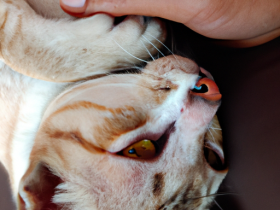
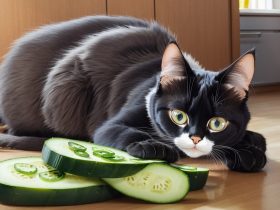
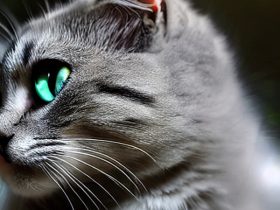
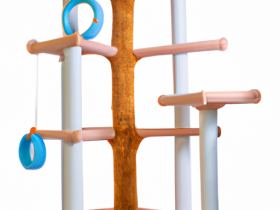
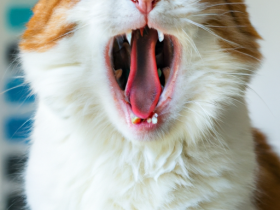
Leave a Reply
View Comments